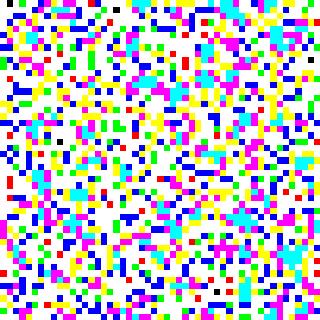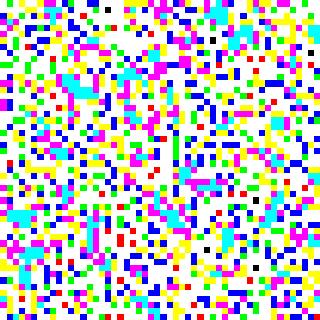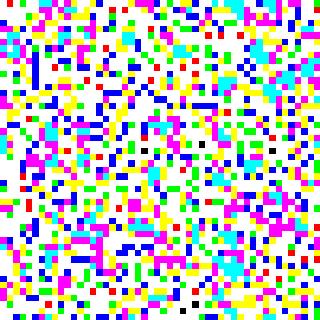
Auxilary materials for "One Tub, Eight Blocks, Twelve Blinkers and Other Views of Life", by John Pulsifer and Cliff Reiter [3]
The Game of Life is a well known and intriguing process that was first described by John Conway[1-2]. It is a two dimensional automaton that operates on square arrays of cells. Each cell has a value of 0 (dead) or 1 (alive). Cells which are alive at one generation are alive at the next if 2 or 3 of their 8 neighbors are alive; cells that are dead at one generation are alive at the next if exactly 3 of their 8 neighbors are alive. This automaton is intriguing because complex behaviors occur. Periodic and moving structures appear and visual representations contain both suggestions of structure and randomness. It is traditional to view the evolution of the automaton via black and white animations. This note follows the convention in "One Tub, Eight Blocks, Twelve Blinkers and Other Views of Life" [3] and marks dead cells as white (or transparent) and alive cells are marked according to the number of neighbors. Indeed, this note is meant to augment that note. The following figure shows our convention for color.
Some first views
A study of the evolution of square configurations
Given the symmetry of the initial configurations and the rules, each of these examples maintain 4-fold symmetry. These configurations are simplier and more symmetric than random configurations.Behavior on random configurations
Here we see the evolution on random configuration, with periodic boundary conditions, may take hundreds of generations to simplify. Random configuration I; 400 step animation |
 Random configuration II; 600 step animation |
 Random configuration III; 1000 step animation |